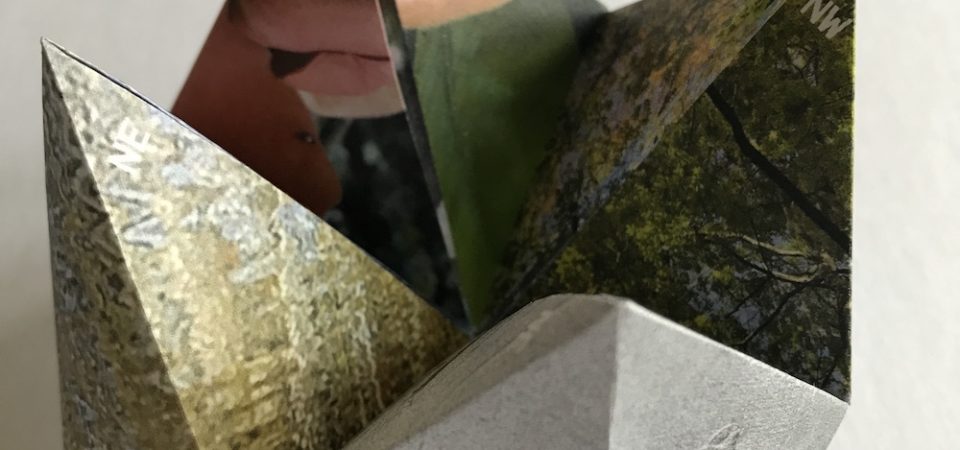“By singing the world into existence, [Arkady] said, the Ancestors had been poets in the original sense of poesis, meaning ‘creation’. No Aboriginal could conceive that the created world was in any way imperfect. His religious life had a single aim: to keep the land the way it was and should be. The man who went ‘Walkabout’ was making a ritual journey. He trod in the footprints of his Ancestor. He sang the Ancestors’ stanzas without changing a word or note—and so recreated the Creation.”
∼ Bruce Chatwin, The Songlines
One thread running through much of my work is the intention to sing a preferred world into being through the act of walking. I have always loved walking: It keeps me physically and emotionally healthy, allows my mind to wander, and reduces my CO2 production when I walk rather than drive. It allows me to see the world at the pace prescribed by our human evolution over hundreds of thousands of years. It slows the world down. It engages my attention.
It is no wonder walking is integral to my art. While I am inspired by the canonical walkers—Tony Smith, Robert Smithson, Hamish Fulton, Richard Long, and others—I seek to replace objectivity, procedural neutrality, even aesthetic cynicism, with awe and inspiration. I walk to absorb beauty through my senses, to retrace it with my feet, to share it through works I produce. In so doing, I fortify myself, praise our Earth, and hope to inspire others.
These are a few examples of my walking practices.
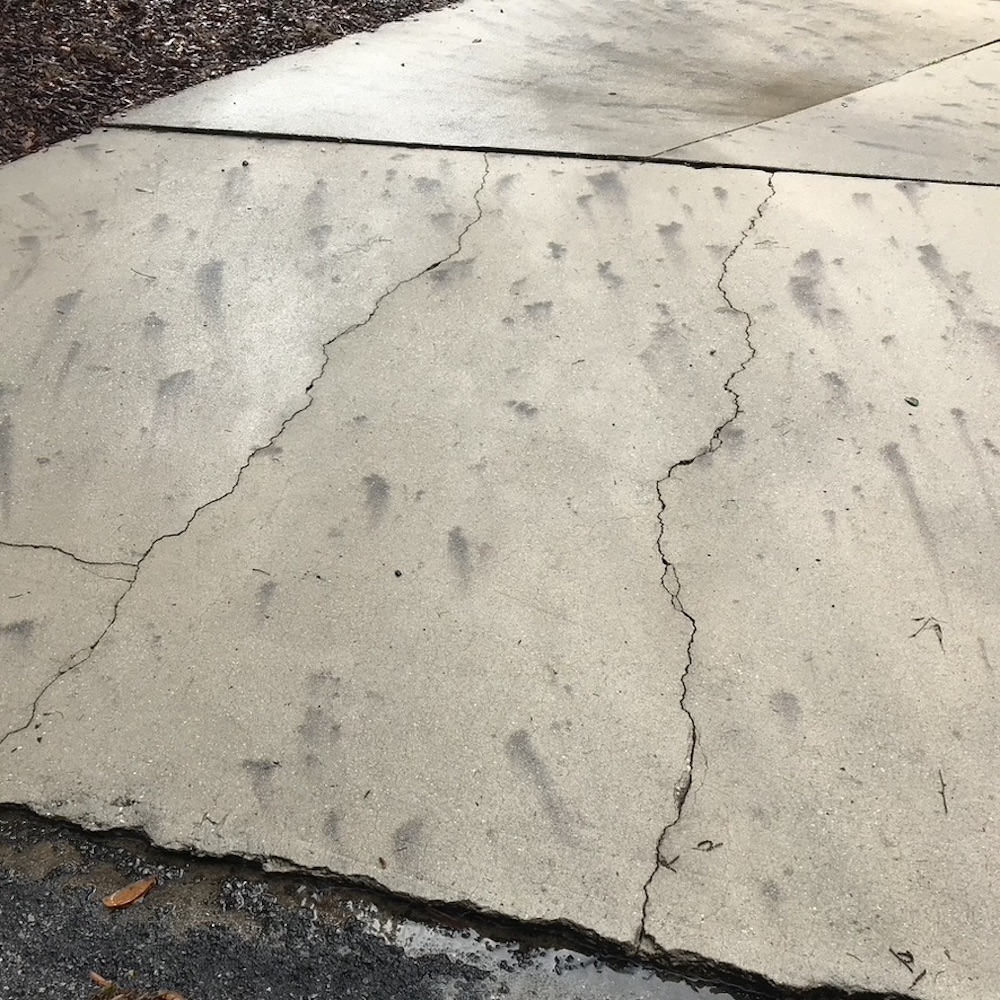
Found drawing after #Duchamp, iPhone photo, created April 14, 2022 at 11:01 AM; posted October 15, 2022
Found drawing after #Duchamp
This image is from of an irregular series of photos posted on my Instagram page, all titled “Found drawing after #Duhamp.” Artist Marcel Duchamp, inventor of the readymade, asked his audience to reconsider art, arguing that simply by calling something art—giving it a title, signing it, or placing it in an art context such as a gallery—it became art.
Referring to the Alan Watts quote on my Instagram, “Total situations are, therefore, patterns in time as much as patterns in space,” each photo in this series invites the viewer to think of every moment we experience as part of an ongoing planetary performance.
In this spirit, I hope that people who see these photos will come to recognize sunlight, shadows, stains, and the surfaces or forms that cast or capture shadows or cause reflections, as fragments of one ongoing planetary artwork.
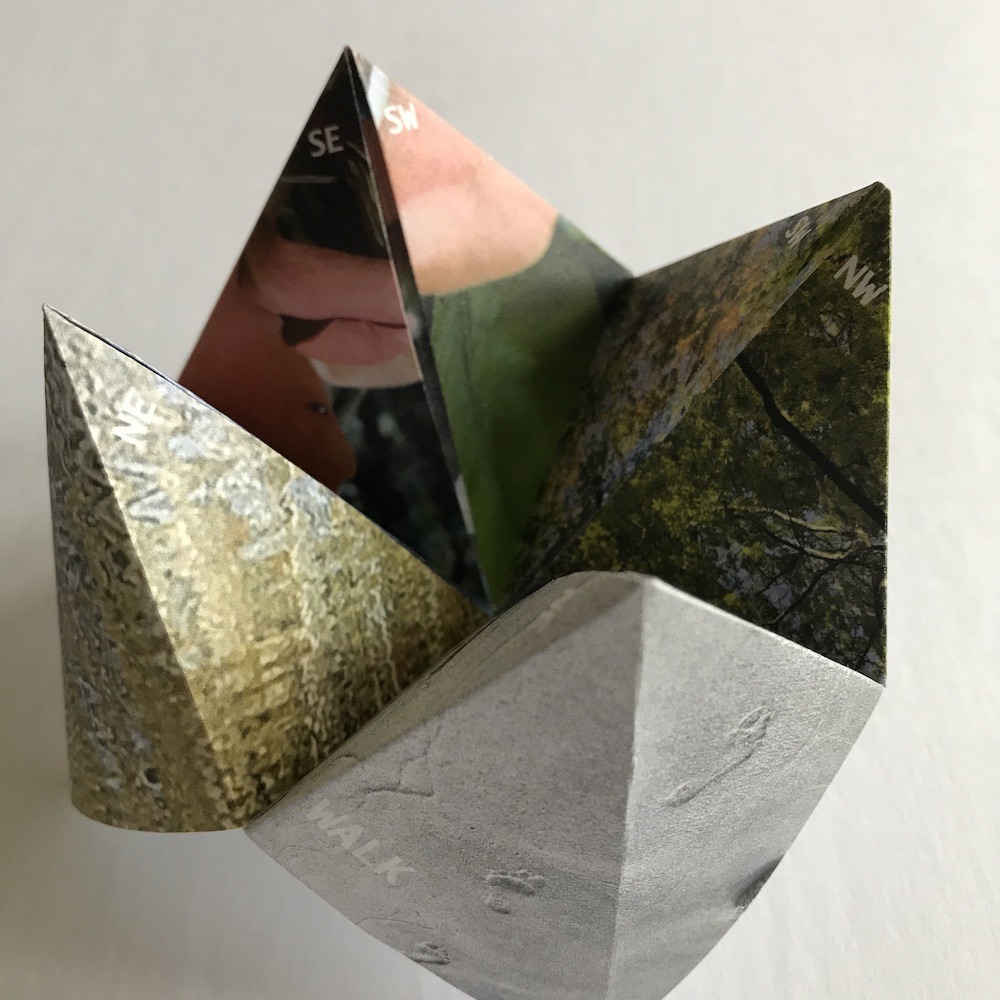
Fortune Teller, 2023, 8” x8” inkjet-printed paper, folded
Four Medicines/Fortune Teller
Several years ago, in a dream, I encountered a large white bear. He was wearing a medicine pouch, in the tradition of an indigenous shaman. I realized the pouch contained medicine, and the white bear wanted me to have it. I wondered what that medicine was, and I began thinking actively about the medicine I needed.
I came to understand I need four medicines:
Water
Walking
Forests
Gardens
These situations—a combination of place and active engagement—sustain me. They are the inspiration and often the subject of my art. They also, separately and in combination with each other, sustain human life. They are systems at the intersection of the Earth’s ecology and human behavior. In my life, these medicines interact with each other as they nurture and heal me.
I began thinking about my personal guideposts—my four medicines—and flashed on an image from my childhood, sometimes called a “Fortune Teller.” It is a simple combinatorial machine, leading to surprising suggestions. I decided to make one, incorporating my photographs, my local knowledge, and my knowledge of sustainability and resilience.
Soon after making the Fortune Teller, I followed my first prompt, “Walk along Highway 441 to make a point.” With a friend, I walked one mile northwest, then back, along a busy regional highway. I took timed photos every five minutes, as well as photos recording places that held the promise of gardens, forests, and water. I was surprised to find three Medicines within this forlorn stretch of highway.
I thought my performance would “make a point” to passing drivers who would observe how challenging it is to walk along a busy highway. Instead, the point I found was that gardens, forests, and water were lying in wait for me to discover. I shared my reflections in a blog post titled “The lesson I thought I would teach, and the lessons I learned.”

Topo-graph: Draw a walk, 2016, Motion-X, GIS, and graphite on paper, original 8 ½” x 11”, as published in Earthkeepers Handbook; Heal the man, heal the land, an ecoartspace publication, 2023.
Watershed anecdotes
“What the map cuts up, the story cuts across.”
∼ Michel DeCerteau
The Watershed Anecdotes series is an ongoing project through which I seek to combine the logic of the map with that of the story, to fuse an abstract understanding of space with a lived experience of space.
In general, the Watershed Anecdotes address my long-time fascination with this question: Cartesian space provides an abstract, universal matrix into which modern life is set. Lacking a grid, how would we register one system of experiences, events, objects in relation to larger wholes? And why do we try? Can we recover landmarks now buried within contemporary landscapes?
The series is organized around watersheds, which follow the logic of gravity, water, and earth, rather than a logic of apportioning legal ownership. Through these works I try to imagine how humans might have understood their environment before Western influences arrived. In this way, I hope to recover/uncover meaningful places defined by the forms of the planet rather than by commercial or administrative forces.
This series incorporates a range of media and methods.
The maps begin with drawings made with my body, as I walk local landscapes. They are recorded using MotionX, an iPhone app that tracks my walks in real time, and that can be imported into GIS software. These recorded walks (around 100, done across several years) are incorporated into basic GIS maps, using data sets, primarily provided by the USGS, including topography and hydrology. The maps are printed on canvas or paper then further manipulated with oil paint or, in this case, graphite.
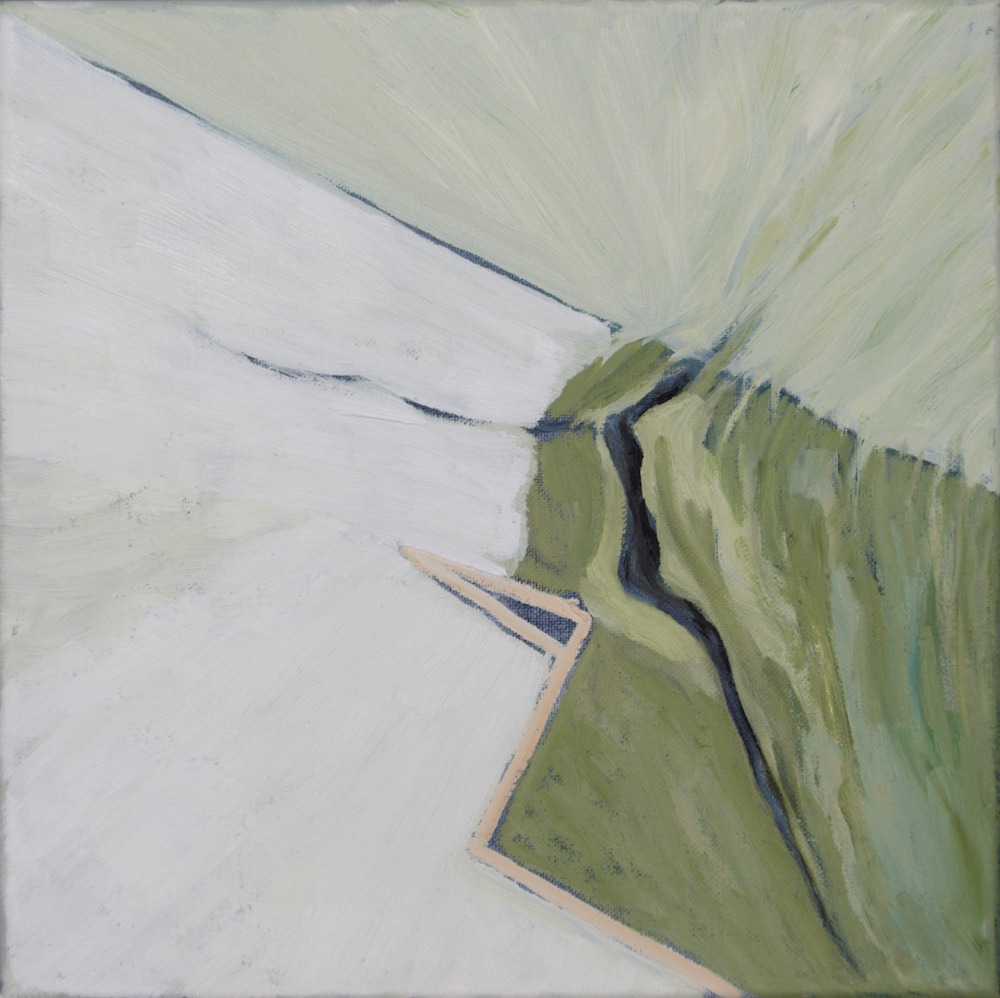
Bat House Woods pond, 2018, oil paint on canvas, 12” x 12”
Swerves off the grid
This small painting is part of the “Watershed Anecdotes” series which pairs expressive mappings with small, abstracted landscape gouaches. In each pair I sought to connect an abstract, Cartesian logic with lived experience.
Each map-based painting unexpectedly reveals the interplay between a road or property boundary—by happenstance located on a subdivision of the Jeffersonian grid–and a swerve, where local features intervene. It records doubly-embodied research, first as a walk, then through intuitive yet disciplined marks.
The grid, when used as a form of land division, pretends that all land is equal. As Lewis Mumford explains, “the resurgence of capitalism of the seventeenth century treated the individual lot and the block, the street and the avenue as abstract units for buying and selling, without respect for historic uses, for topographic conditions, or social needs.”
Meanwhile, the elements I characterize as “swerves”—a lake, a river, an old footpath with its totemic tree, and two springs flowing to different watersheds—resist the logic of the grid.
These topographies explain, in part, why the terrain portrayed in some of the Watershed Anecdote paintings has been continuously inhabited for several thousand years. They offer hints toward a more resilient, localized future.
In this painting, a property line interrupts the footpath, but not of rainfall: a surprise lake occupies the basin.
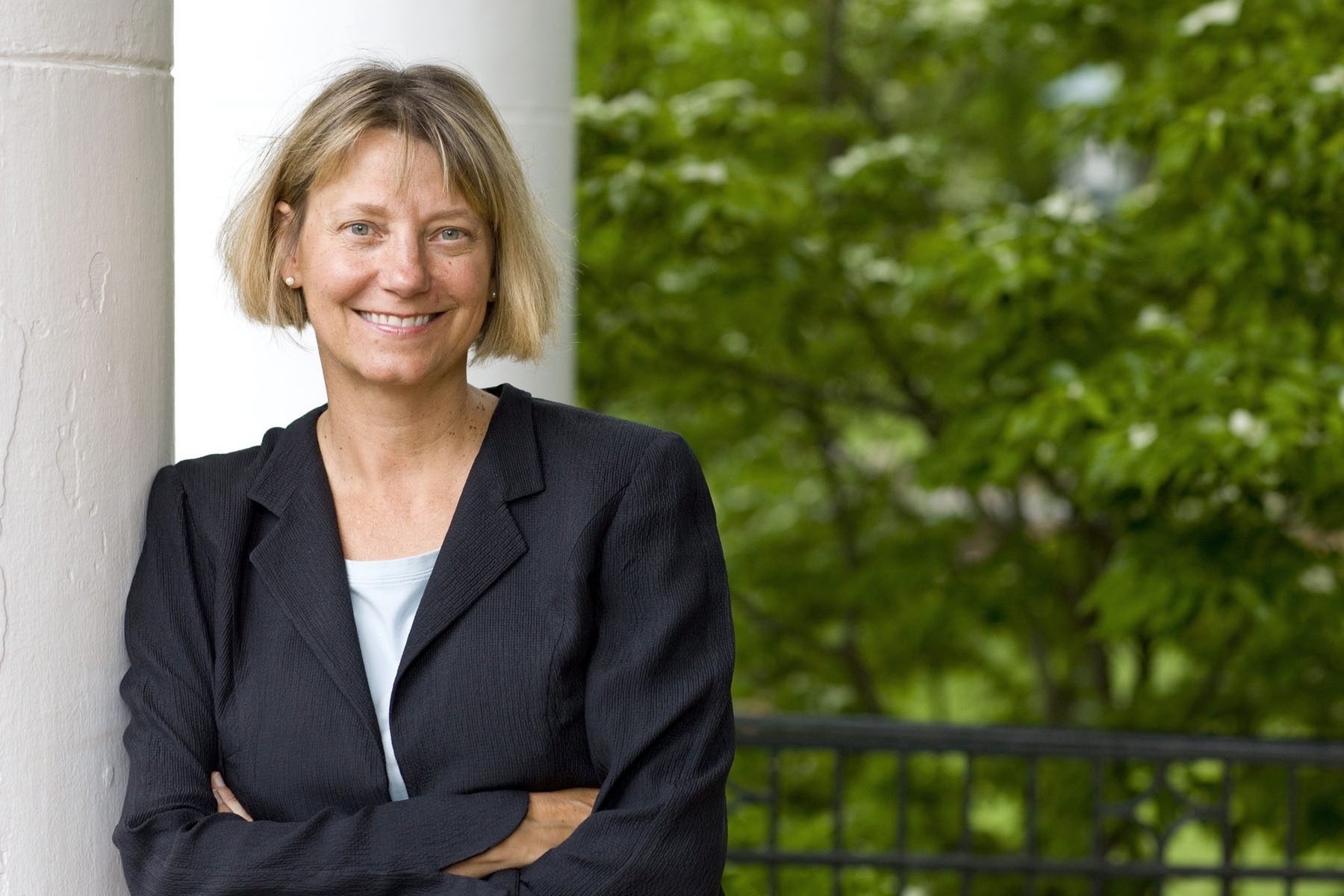 Trained as an artist, modern dancer, choreographer, writer, and architect, Kim Tanzer incorporates elements of each of these disciplines in her art. Her work explores patterns spanning time and space, across scales. She has a particular fascination with the infinite ways energy deposits form, and form, conversely, shapes flows of energies. She makes marks, structures improvisational or scripted choreographies, documents communities, and captures and adjusts film sequences, to map and occasionally to transform, the world’s processes. Her work is informed by her long practice of architecture, evident in her use of architectural drawing conventions, and in her sense of spatial precision. She is motivated by a desire to increase social equity and reverse environmental destruction. Her art includes paintings, drawings, photographs, videos, performances, social and community-based exchanges, and writings. Her subject matter–abstracted landscapes, reverentially retraced paintings of barks and trees, confluences of natural or social forces or perceived pure energy–converge in the goal of making planetary forces visible.
Trained as an artist, modern dancer, choreographer, writer, and architect, Kim Tanzer incorporates elements of each of these disciplines in her art. Her work explores patterns spanning time and space, across scales. She has a particular fascination with the infinite ways energy deposits form, and form, conversely, shapes flows of energies. She makes marks, structures improvisational or scripted choreographies, documents communities, and captures and adjusts film sequences, to map and occasionally to transform, the world’s processes. Her work is informed by her long practice of architecture, evident in her use of architectural drawing conventions, and in her sense of spatial precision. She is motivated by a desire to increase social equity and reverse environmental destruction. Her art includes paintings, drawings, photographs, videos, performances, social and community-based exchanges, and writings. Her subject matter–abstracted landscapes, reverentially retraced paintings of barks and trees, confluences of natural or social forces or perceived pure energy–converge in the goal of making planetary forces visible.
Tanzer was born in Montclair, New Jersey. She graduated from Duke University, where she studied studio art, modern dance, and choreography. She received her Master of Architecture degree from the College of Design at North Carolina State University. She taught architecture at the University of Florida and later at the University of Virginia, where she served as Dean. She is based in Gainesville and Cedar Key Florida, where she retains her license to practice architecture. She is a Fellow of the American Institute of Architects and a Distinguished Professor of the Association of Collegiate Schools of Architecture.
Website: https://kimtanzer.net
Instagram: @kimtanzer
This article is a contribution to the “The Arts and the Anthropocene” series by the MAHB Arts Community. If you’re an artist passionate about sharing your insights and artwork on this subject, please don’t hesitate to reach out to Michele Guieu, Eco-Artist and MAHB Art Director, at michele@mahbonline.org. Your contributions are greatly appreciated.
Thank you. ~

